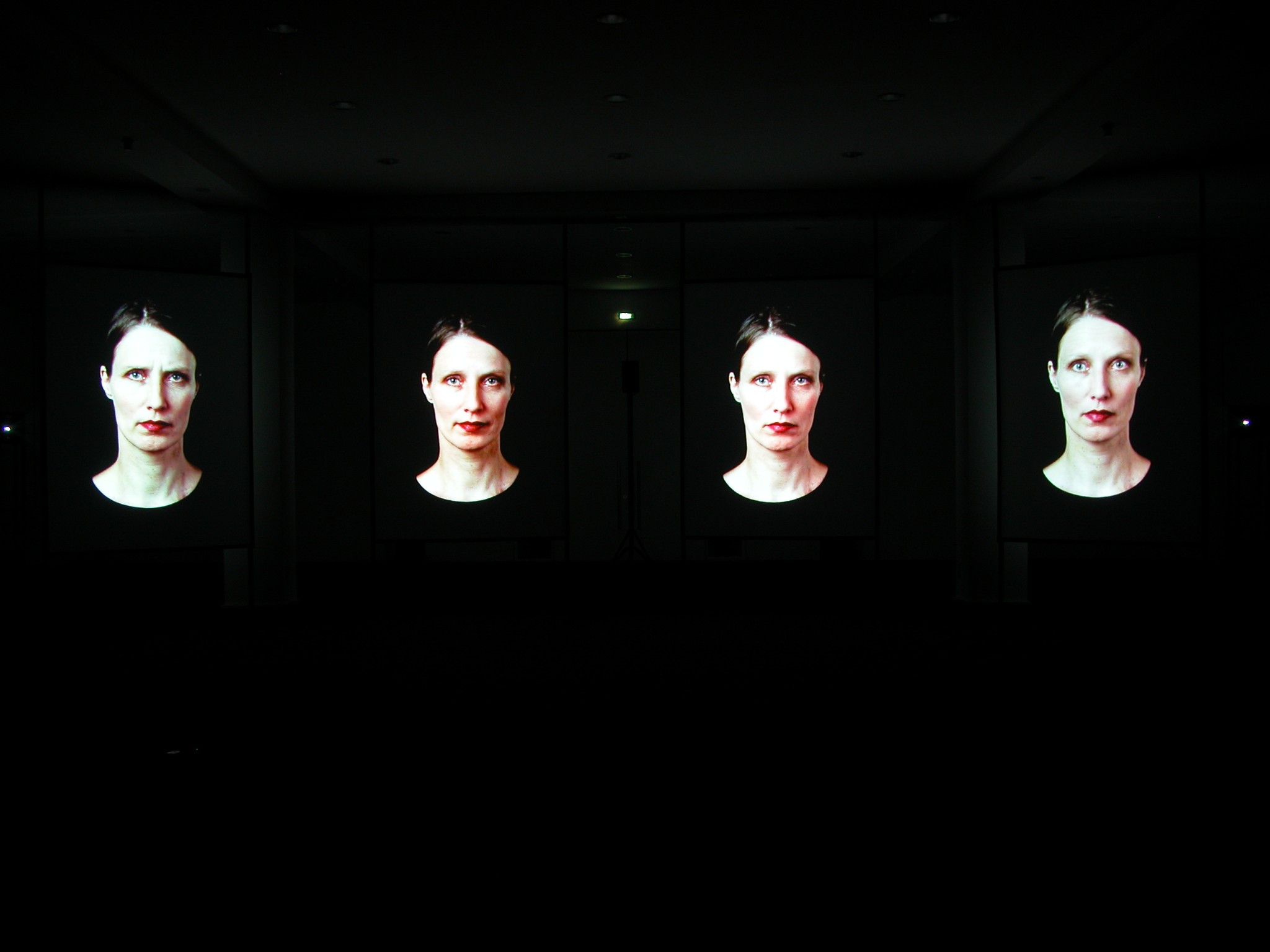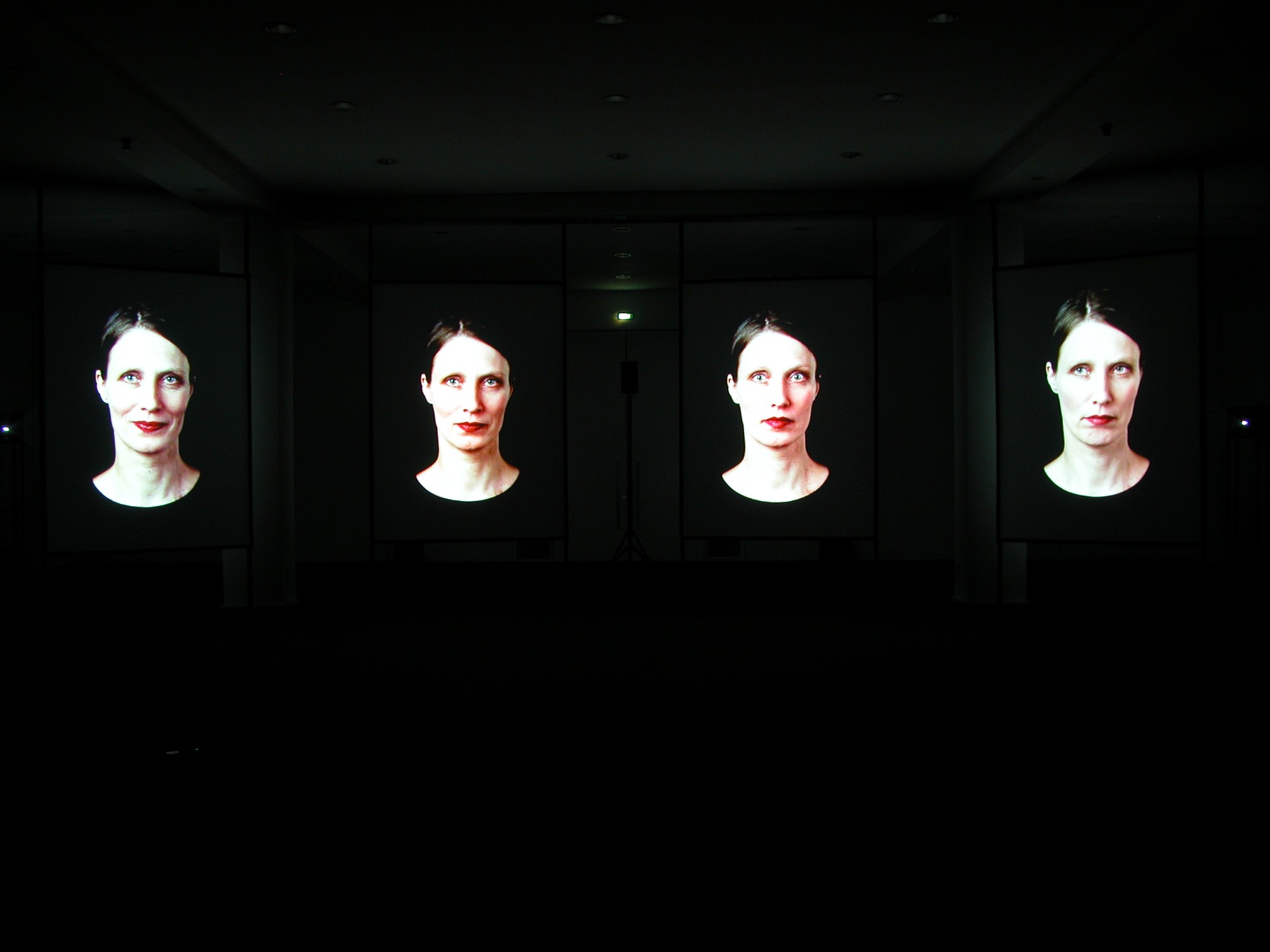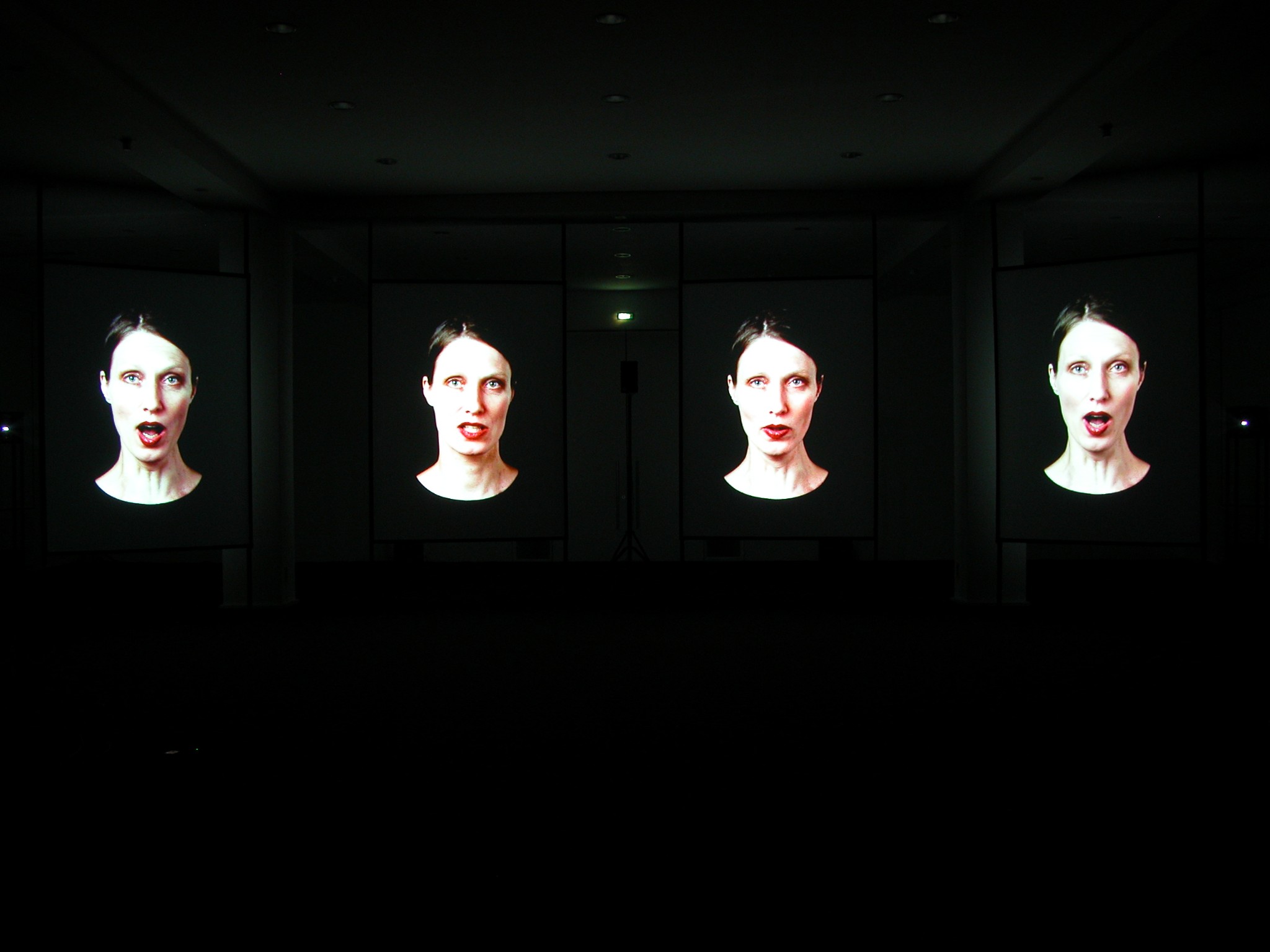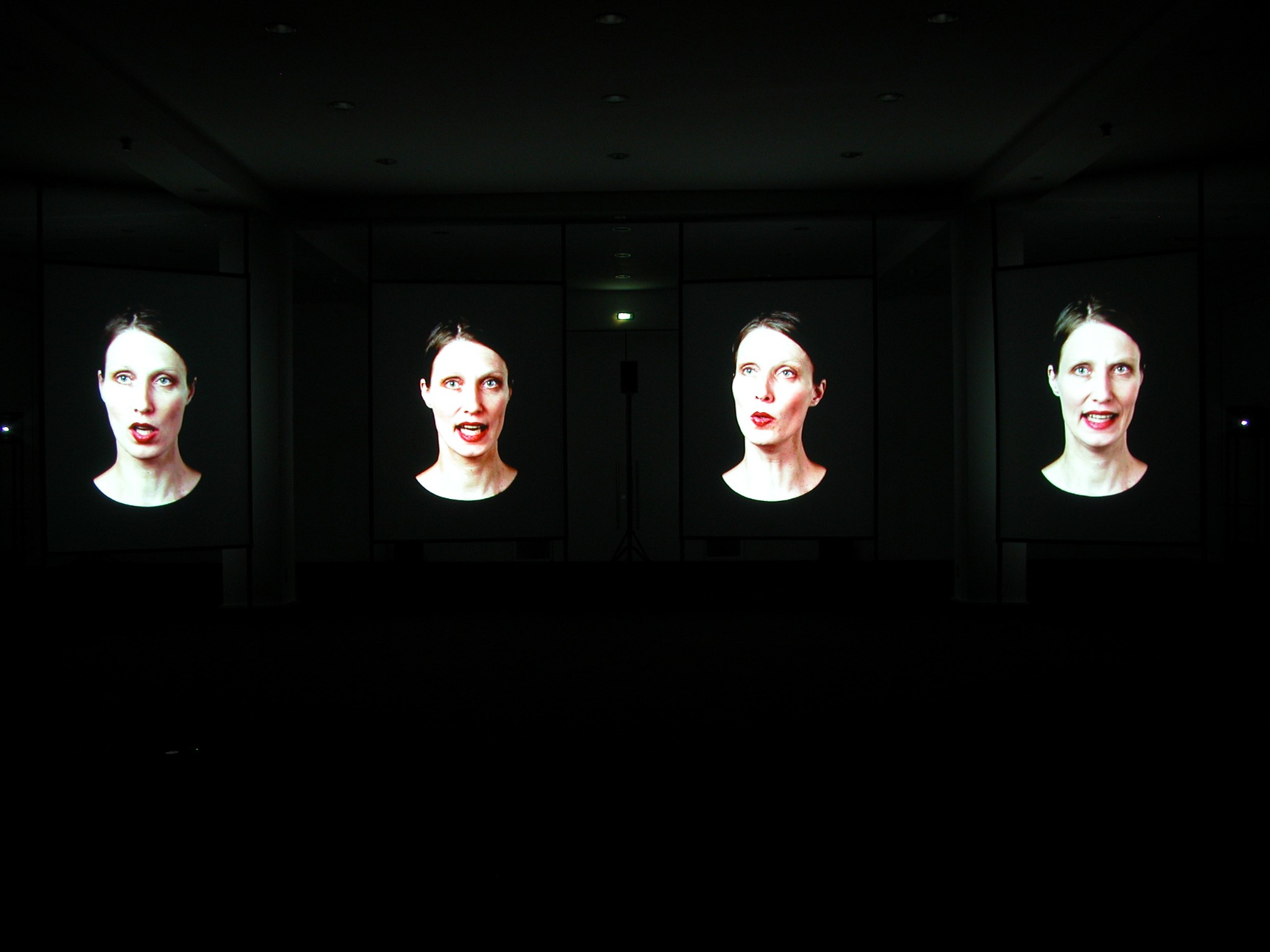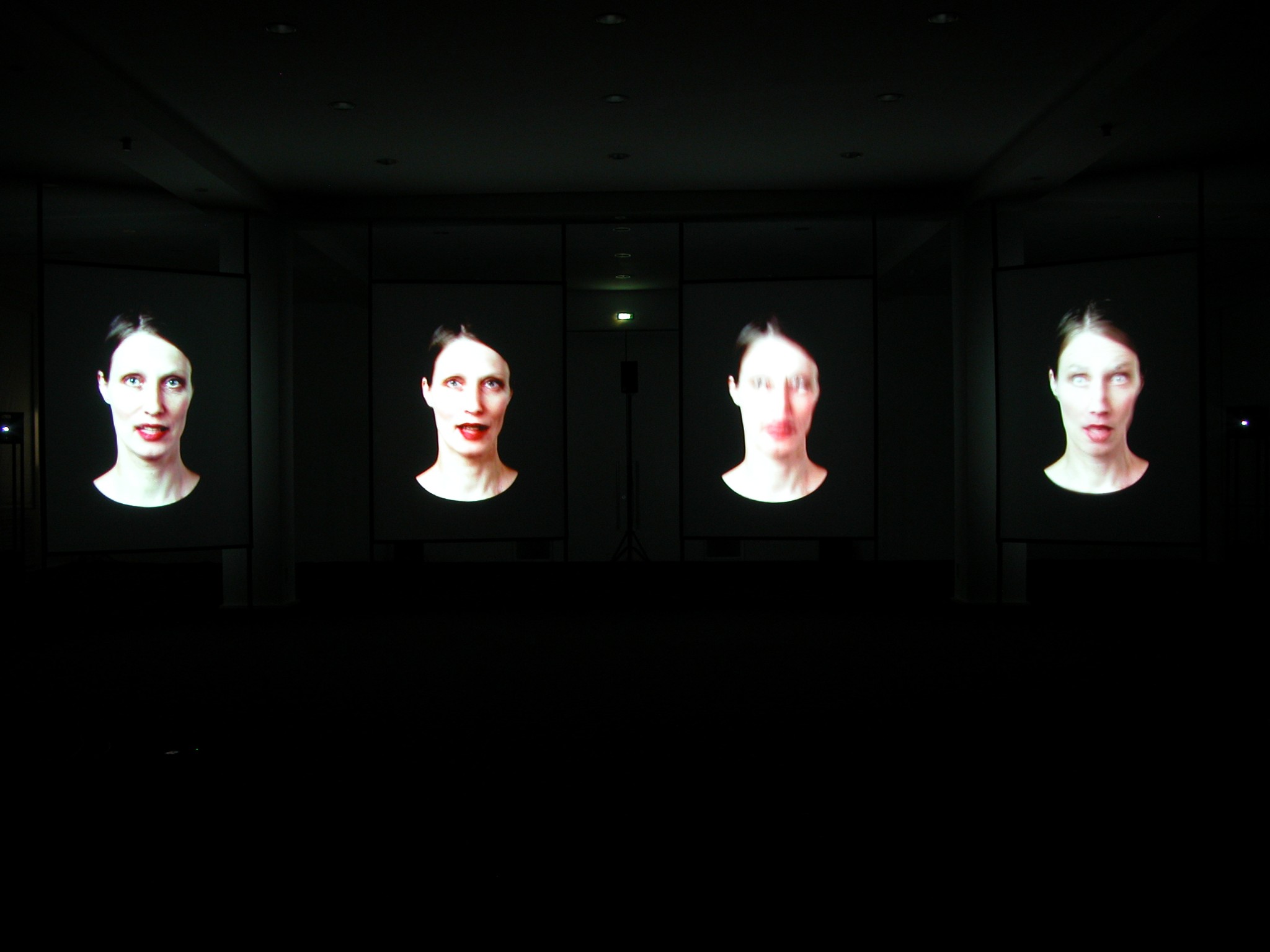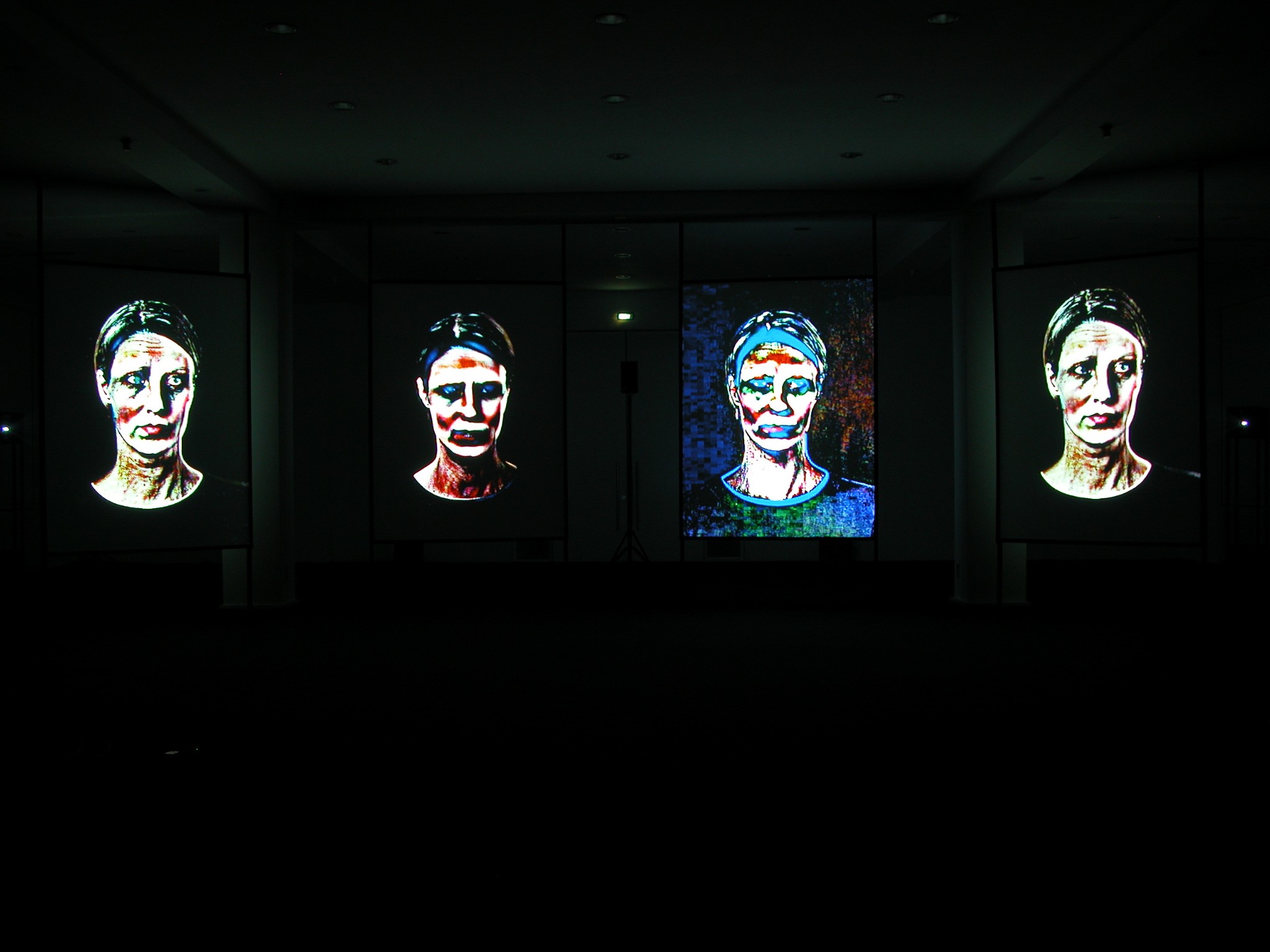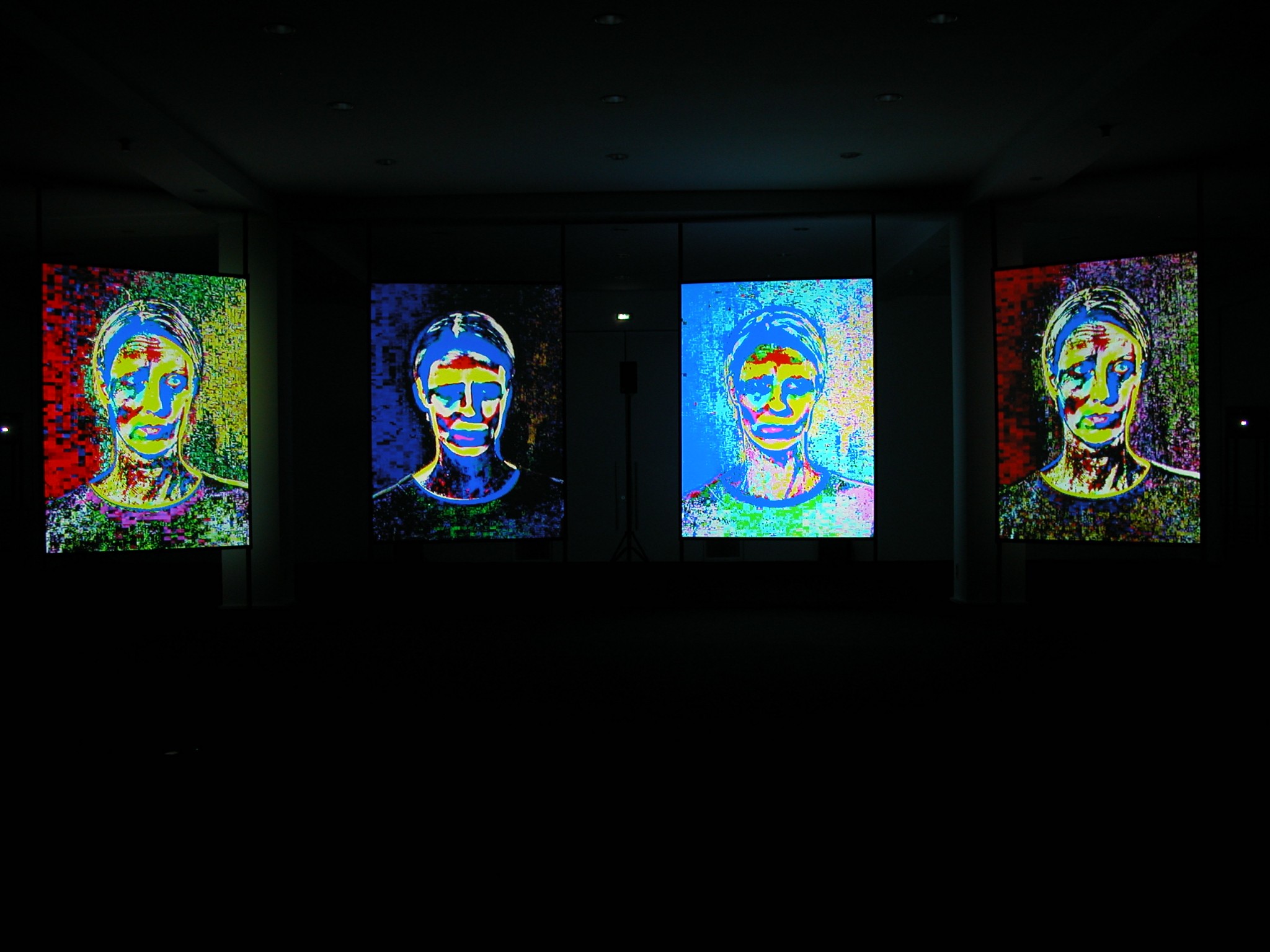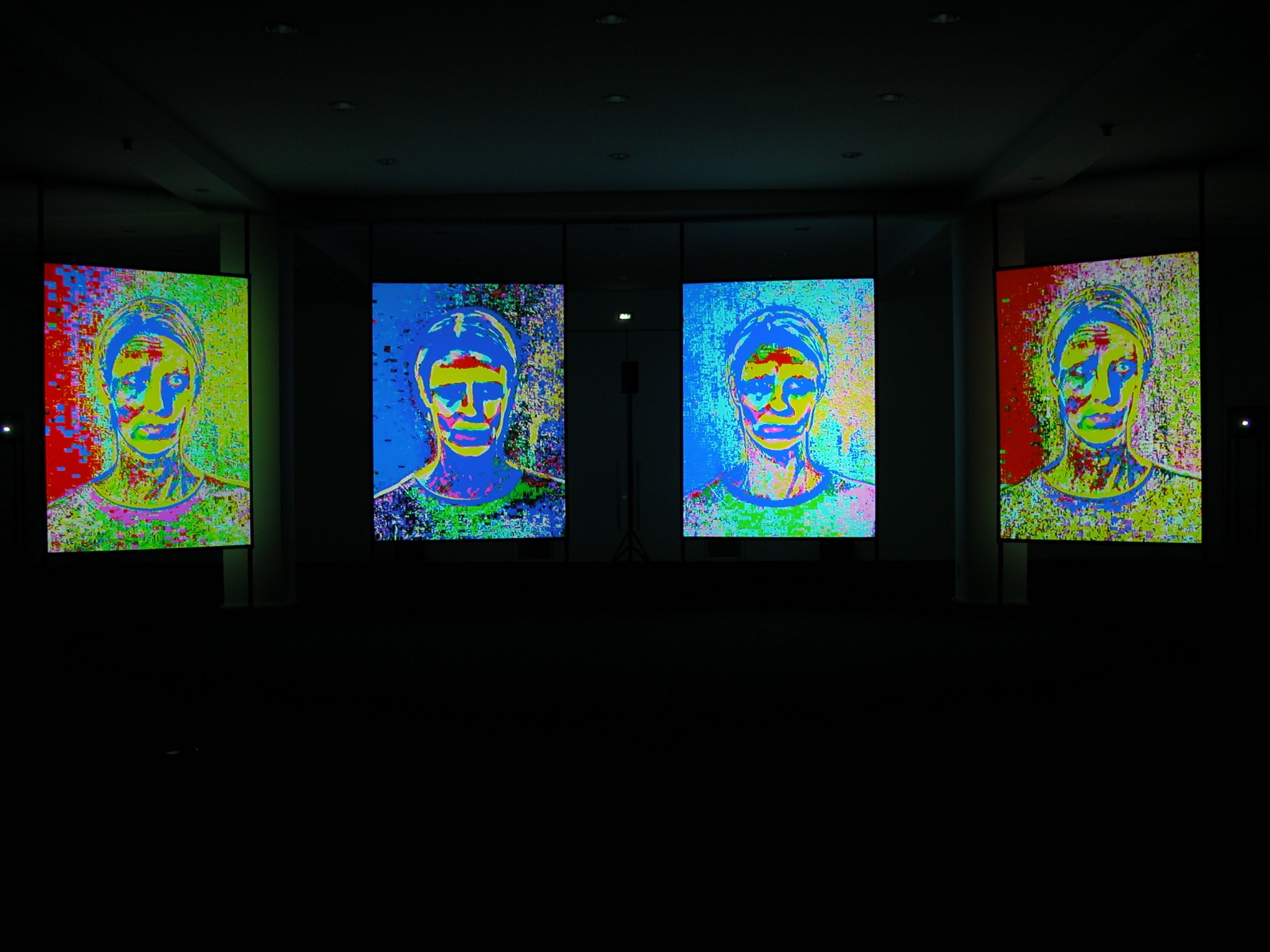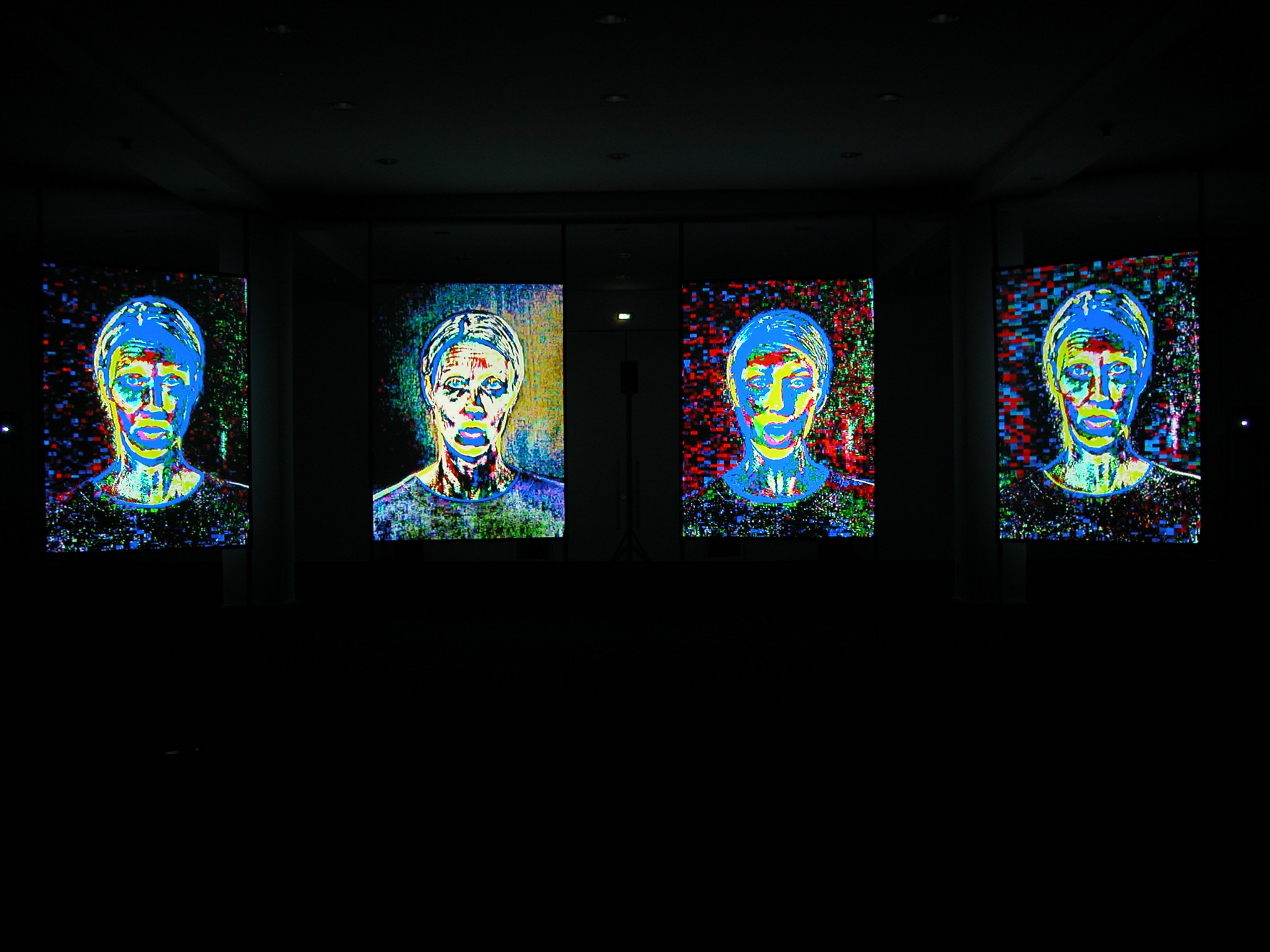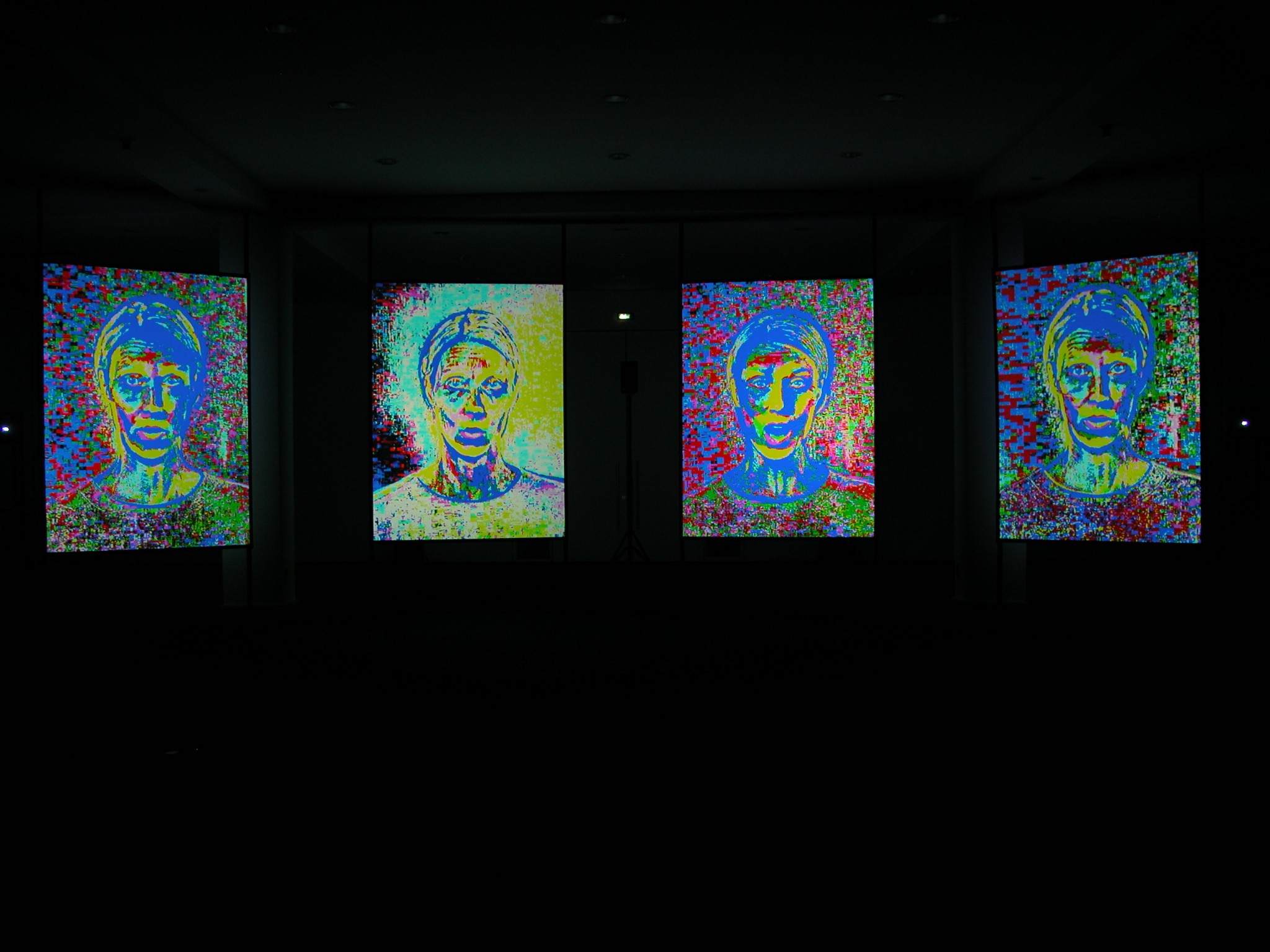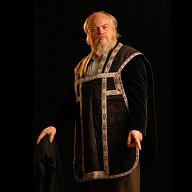Code Switching is a collaborative work produced with the composer Ana Maria Rodriquez and the programmer Yunchul Kim, which investigates sensory forms of representation. It is an intra-semiotic study which transforms phonemes into a visual, acoustic and vocal language. Here the phoneme is interpreted as the smallest unit in language, visual or auditory, which is capable of conveying a distinction in meaning.
Code Switching was part of the MärzMusik festival program from 18–28 March, 2004. A 20-minute performance with the soloist Ute Wassermann, including a ten day installation with an alternate audio track, was presented at the Hamburger Bahnhof, Berlin.
During the production phase, I photographed the vocalist Ute Wasserman as she acted out a selection of phonemes and staged expressions. Ana Maria Rodriguez recorded Wasserman’s vocals of phonemic sounds for the audio composition. The original audio and photographic recordings underwent visual and acoustic transformations with similar digital post-production techniques.


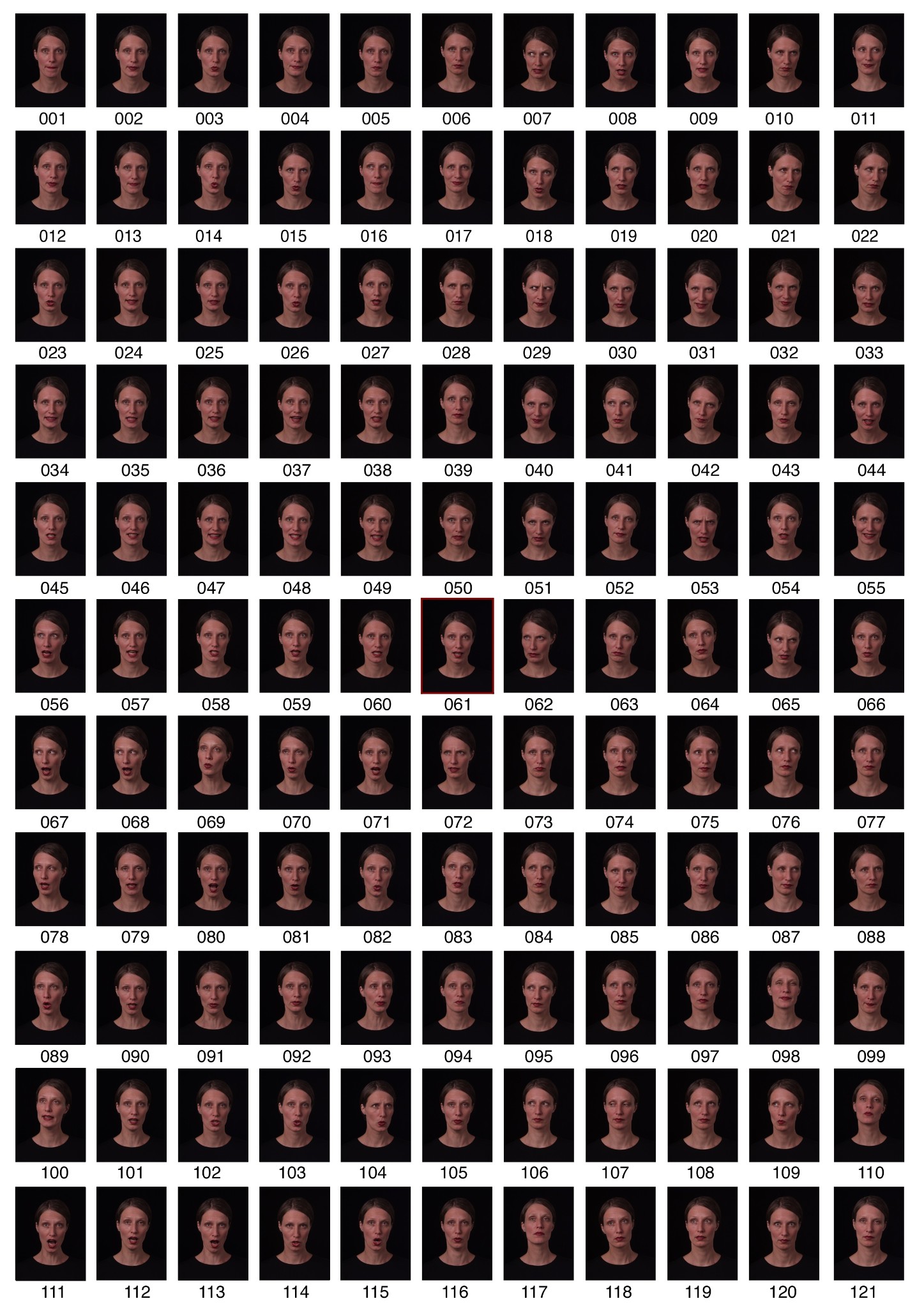
Mapping system
In order to create the video component of this work, a complex mapping system of 121 photographs of the soloist were morphed together to produce 420 interconnectable video sequences. This matrix of sequences was programmed with MaxMsp and Soft VNS. A flocking algorithm ensured a non-synchronous mirroring of expression over four video channels, while drawing from this database of inter-connectable sequences. In addition, four categories of expressions located on the matrix resulted in four navigable zones to include sequences of a singing face, a face articulating a phoneme, an emotive face, as well as more ambiguous facial expressions concentrating on the movement of the eyes and other facial features. Two MaxMsp filters were also used to achieve a dynamic staging effect for the live component of this work. The filtering was primarily reduced and subtle, except on one occasion where the image undergoes an entropic treatment resulting in a chromatic extreme.
During the production phase, I photographed the vocalist Ute Wasserman as she acted out a selection of phonemes and staged expressions. Ana Maria Rodriguez recorded Wasserman’s vocals of phonemic sounds for the audio composition. The original audio and photographic recordings underwent visual and acoustic transformations with similar digital post-production techniques.

Space Design
This four-channel space or ‘stage’ provided an innovative platform for the artists to manipulate the recorded images and sounds during the performance. The interactivity presented a platform for the collaborators to produce a subtle and unexpected dramaturgy: a conversation with the self, or with the multifaceted nature of the self.
The emergence of an intrasemiotic network of meanings—a permanent exchange between codes—results from this continuous translation of one system of signs to the other. Various temperaments surface. The faces call out to each other, they sing.
Collaborators
- Ana-Maria Rodriguez, sound artist/composer
Yunchul Kim, programmer/video artist
Ute Wassermann, soloist
Reviews
- Herzfeld, Isabel (2004) Viel Lärm um wenig: Zur dritten MaerzMusik, Berlin
Publications
- Maerzmusik, Festival für aktuelle Musik – 18 bis 28.03.2004, Berliner Festspiele, Berlin, 2004
- Föllmer, Golo and Gerlach, Julia (2004) Audiovisions: Music as an Intermedia Art Form
- Gerlach, Julia (2004) Code Switching
Exhibitions
- Code Switching Hamburger Bahnhof: Museum for the Present, Berlin, Germany

